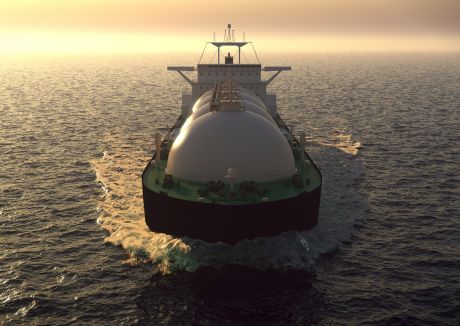The increase in flexible LNG is attracting market participants to operate on a portfolio basis. This applies to a broad spectrum of the market including upstream players, NOCs, traders, LNG buyers and project developers. Conceptually it is not difficult: so why are organisations struggling to achieve the step-change from “contract management” to portfolio management and optimisation?
We see three common barriers to realising this change:
- New organisation structures and processes are being put in place, but day to day behaviours and practices stay the same
- Processes and practices are not adapting to the new realities of short-term market dynamics and low prices
- Senior management buy-in to the portfolio strategy, yet are failing to move forward from evaluation of standalone transactions
As the prospective challenge of excess capacity and negative value in contracts in the next two – three years escalates, the urgency has increased to address this issue. Moreover, if you believe that portfolio management and optimisation are an essential model for future effectiveness of significant LNG players, then these constraints must be overcome.
From Gas Strategies’ work with organisations that have recently been seeking to make this shift to portfolio management and optimisation, and from our collective experiences of organisations that have successfully achieved the step-change, we know that the challenge is great:
- Typically, these organisations have not had the experience of delivering significant business model change in the past – very often relying on acquisition to bring in new capabilities and mindsets for step-out ventures e.g. in renewables and “new energies”
- Change is frequently constrained by corporate policies to re-deploy existing staff rather than recruit; or even where such recruitment is permitted, the ability to credibly attract and remunerate the best people
- More widely the corporate policies applied throughout a major utility or E&P “steamship” are a poor match to the operational and cultural requirements of agile portfolio management and optimisation
An element that we have identified as a key enabler and facilitator of change is the establishment of new business performance measurement, which we recognise as a lead success factor in the achievement and success of the portfolio management and optimisation agenda. Yet we see performance measurement typically not being addressed at a sufficiently early stage, and sometimes not at all.
At best, this is the challenge to achieve a new alignment of corporate level objectives and strategic planning with the new business model; at its most challenging it spans the full range of performance measurement from strategic business level to the KPIs and performance management of individuals.
We see four key priority areas.
Managing on Portfolio Value
The portfolio business model recognises the long term and composite nature of value realisation across multiple asset and commodity positions. That is, there is an inherent performance objective to deliver value more than individual components.
When potential commodity, shipping, financial hedging and market access opportunities are evaluated on an individual basis it’s easy to see market conditions when that opportunity will be “profitable”, albeit with constraints. However, with a portfolio view that is not necessarily the most relevant metric as we are now looking at how that opportunity fits with the rest of the portfolio. New opportunities should be valued in the context of the impact on the value, risk and limits of the portfolio.
There is not one simple solution to solve this, but a fit for purpose methodology must be put in place. This then must be articulated in a coherent way and adopted across the organisation. Confidence in the methodology will allow the portfolio (and the business) to grow in a profitable way.
This of course raises the questions of the effective construction of the LNG portfolio itself, the appropriate tax and legal structuring, to mention a few. Here these are taken as a given or something imposed, but they can combine to probably be the biggest single factor in being successful as a portfolio player. We will return to this subject at a future time.
Integration of Shipping within Optimisation
On a portfolio basis, shipping has moved from logistics, capacity and utilisation to an integral part of enabling increased portfolio value. The challenge is made even greater in a low-priced LNG world where shipping management is even more important, with many LNG players now lifting FOB cargoes for the first time.
This begins with contracting of shipping capacity: the methodology and structure around type and number of ships; percentage of FOB vs DES sales; ownership or charter; new builds or existing vessels; timing on when to charter in/out. These factors need to be clearly defined in the context of the portfolio and the appetite for risk.
Historically shipping costs accounted for approximately 15% of the delivered LNG price. Today, increases in shipping distances and a low LNG price mean that the cost is now a much larger proportion of the spot LNG price – around 40% of JKM[1]. To be competitive, a portfolio player needs to put the tools and processes in place to minimise shipping costs in the value chain across the portfolio.
An optimised shipping position brings considerable value and optionality to the portfolio as new deals need to be evaluated and existing deals continually re-evaluated in the context of an evolving shipping fleet. Failure to react to a fluid shipping market will lead to the player being unsuccessful with spot transactions and with exaggerated costs for longer term deals.
Performance Tracking
The greater complexity of the portfolio management and optimisation approach must be matched with rigour and granularity in transaction performance evaluation. Performance tracking after cargoes are delivered confirms and explains the value delivered from the portfolio approach. It helps demonstrate whether each decision taken was the right one. This is the basis for feedback to the decision makers who need to be evaluated on this basis, with appropriate remuneration for their individual decisions. Simply tracking an overall P&L does not show the value add from each part of the portfolio organisation.
Within an appropriate framework the organisation becomes clearly accountable for the decisions it makes about the portfolio. The tracking includes, but is not limited to decisions around optimisation, buying and selling cargoes, shipping costs, financial trading and origination. It is important to recognise that a decision to maintain the status quo is equally important as a decision to do something.
Without effective performance tracking there is a significant risk of a supposed portfolio player slipping back into functional silos. Seeing visible results encourages the organisation to work together to maximise the value of the portfolio.
Another key component of performance tracking is the management of variable costs; other important costs that require transparency and evaluation in a portfolio context (apart from shipping) are items such as liquefaction, regasification and fuel losses. This is even more important in a low-priced competitive environment.
Personal Performance Management
There is scarcely a doubt that the successful move to a portfolio management and optimisation approach is predicated on there being a significant culture change in how an LNG team sees itself and behaves. A highly collaborative way of working between functions; close connectivity to the market; pro-active curiosity and search for value; active and timely sharing of market intel and assessment of opportunities: these are all recognisable attributes of agile and successful portfolio management and optimisation. They are basic “tickets to the game”.
While everyone will agree on the importance of achieving these ways of working, why have they proved to be so difficult to achieve?
One common attribute, which we at Gas Strategies recognise, is that organisations are frequently too slow in developing and embedding new personal performance measures that are aligned with the new business objectives and intended operation. It will not be surprising that the individuals themselves may bring resistance to change and a reluctance to be the first movers to push for such measures. Meanwhile Human Resources functions can be forgiven for being too far from the detail to recognise why and how such changes in performance metrics and management must be addressed. The implementation of aligned and effective incentivisation of individuals and teams also brings its challenges. Human Resources should be embedded in the trading organisation, working with the business and an integral part of the business’s management team.
To paraphrase Peter Drucker[2], what continues to be measured is what gets managed!
Conclusion
Portfolio management and optimisation, whether organisations like it or not, has become the de-facto accepted business model for future success of many LNG businesses. Strategies are set, new processes are defined and organisations reoriented in line with “best practice”: yet behaviours and market effectiveness change slowly, if at all. It appears to us that the larger the organisation the more challenging the change agenda. We at Gas Strategies recognise that the better evolution of performance management, in its many dimensions, can play a significant role in delivering change and better business results.
The performance measurement system needs to be tailored to the organisation’s objectives, structure, size and capability. There is no one size fits all. However, built effectively it will help enable the success of the portfolio player.
[1] Shipping cost US to Asia $1.80/MMBtu and JKM $4.50/MMBtu
[2] This references a quote from Peter Drucker’s 1954 book titled, “The Practice of Management” – “What gets measured, gets managed.” The quote has been repeated so many times since then that it has almost become a cliché.
If you would like more information about how Gas Strategies can help your business with Consulting services across the value chain or provide industry insight with regular news, features and analysis through Information Services or help with people development through Training Services, please contact us directly.








